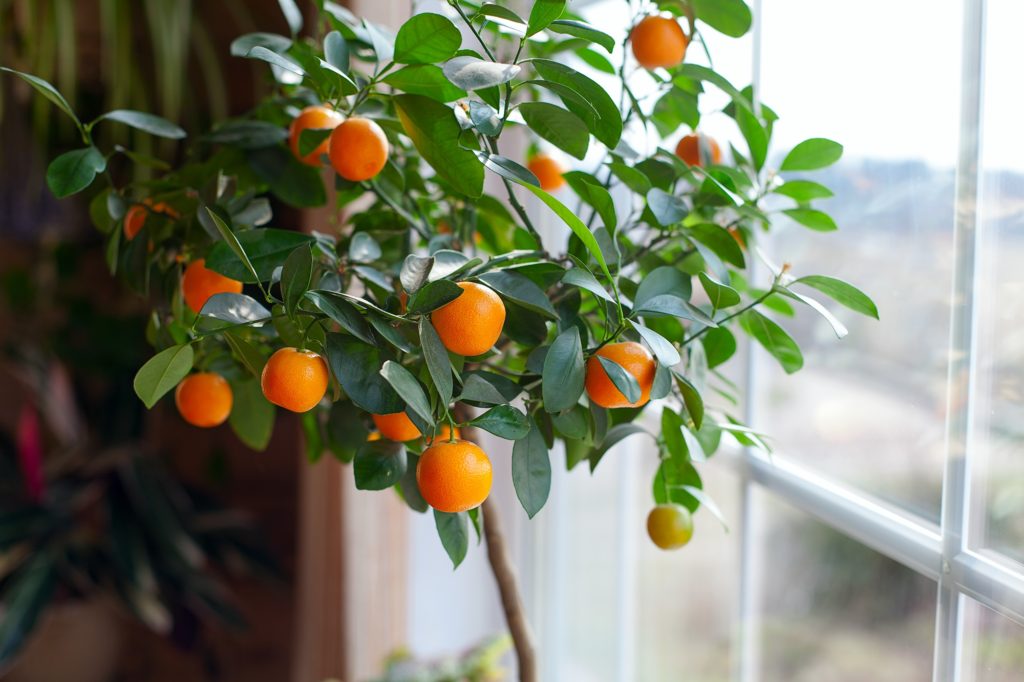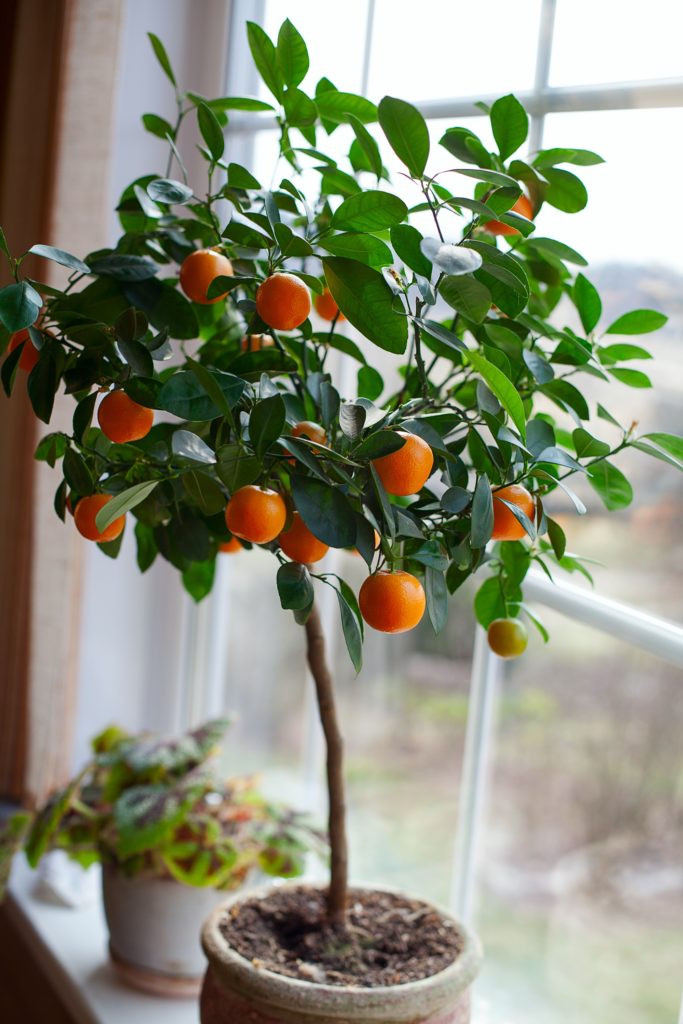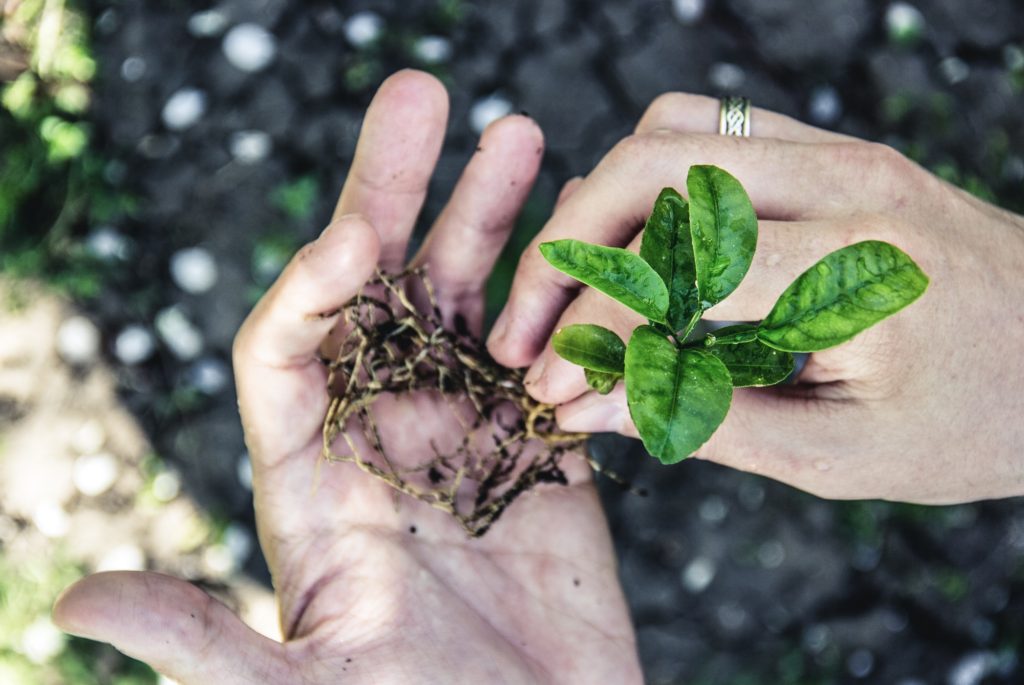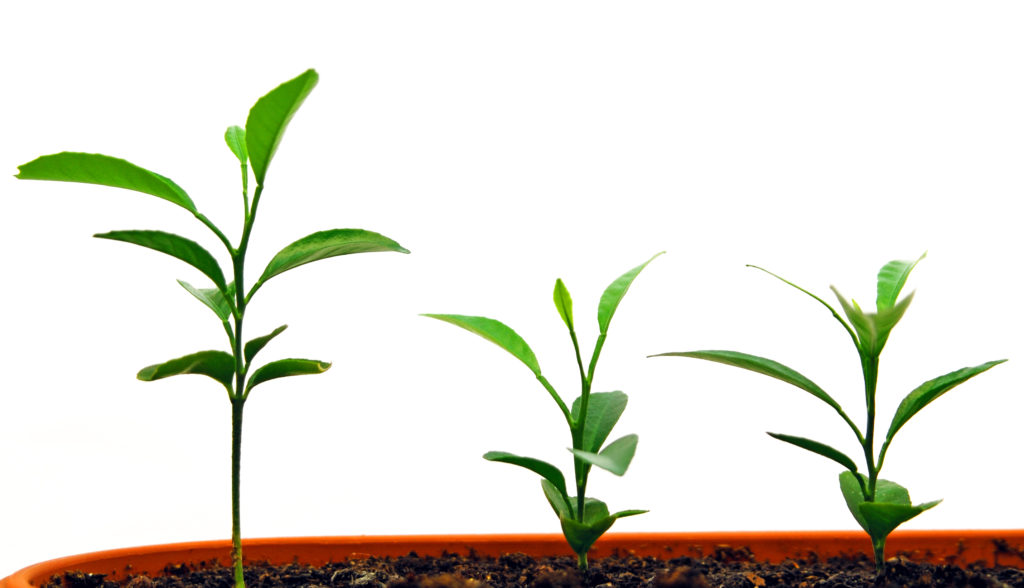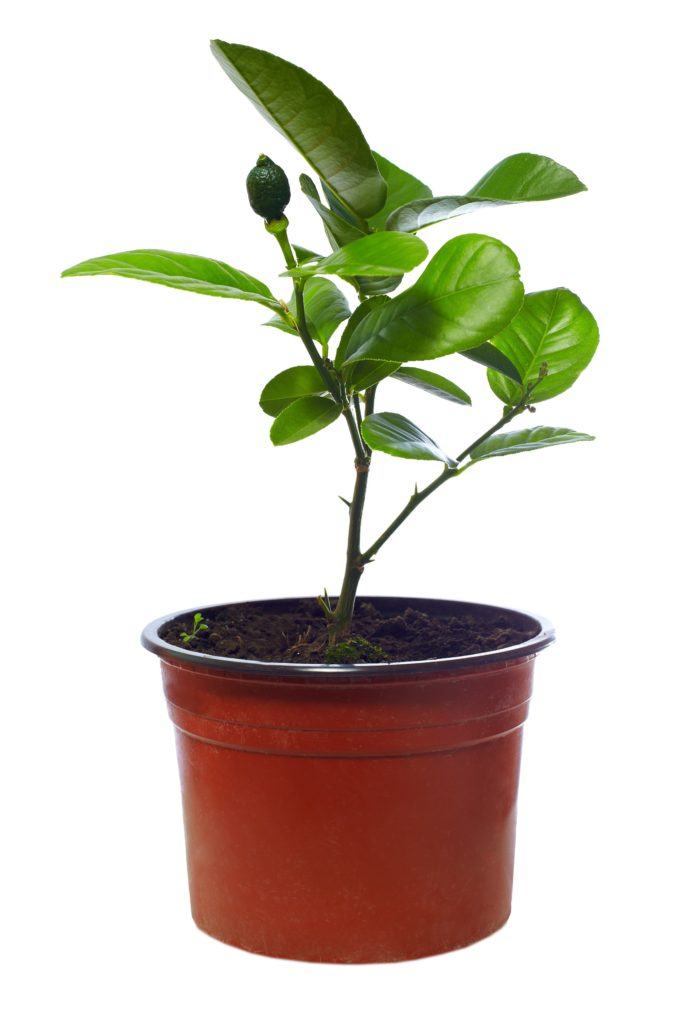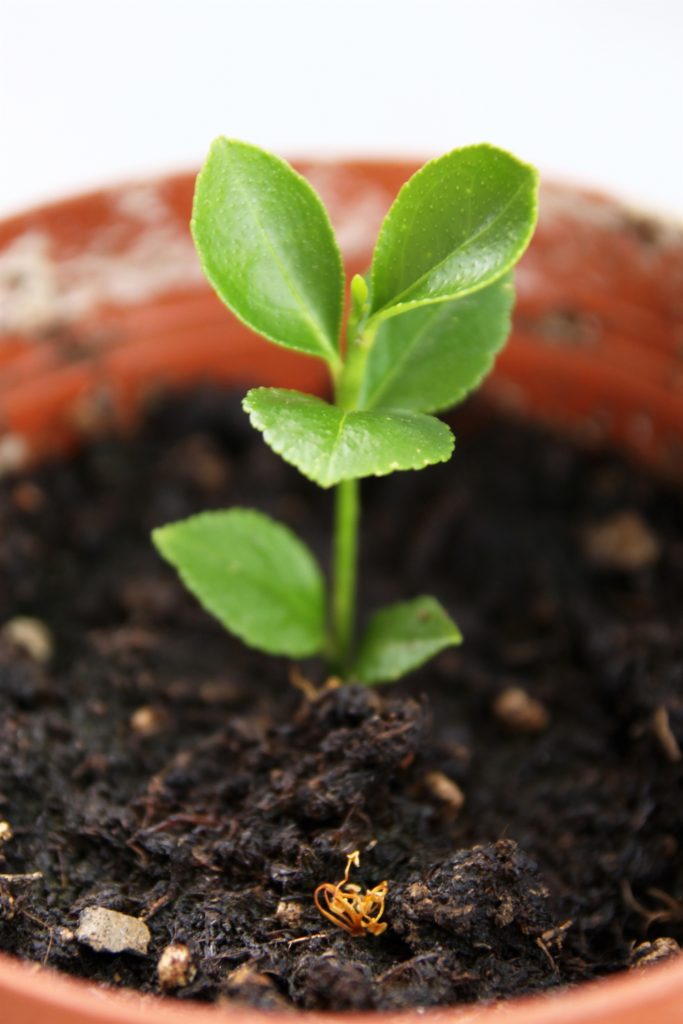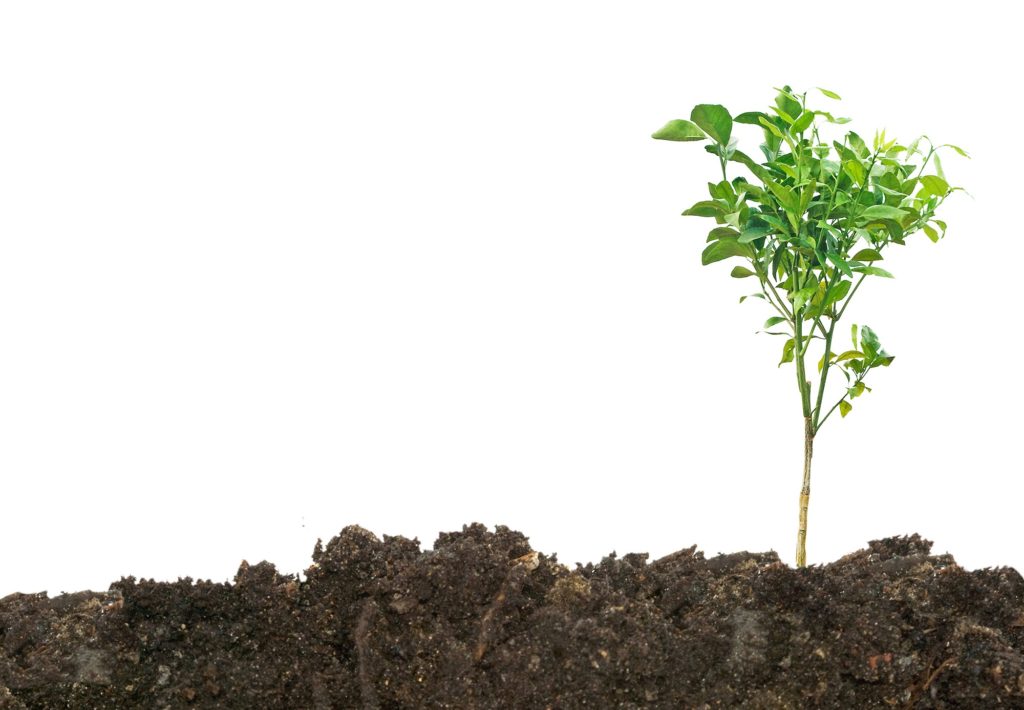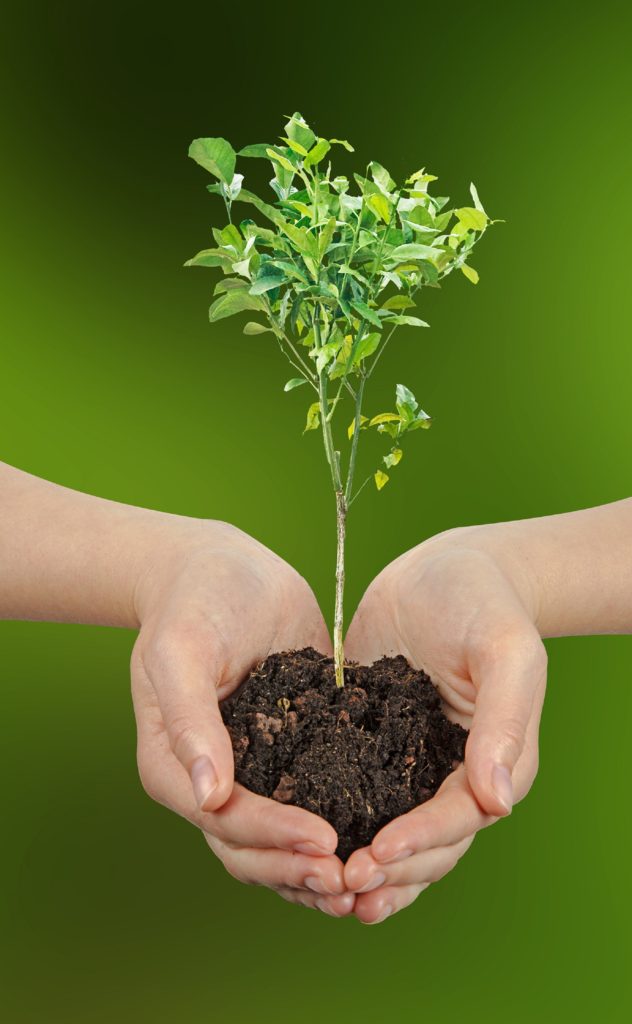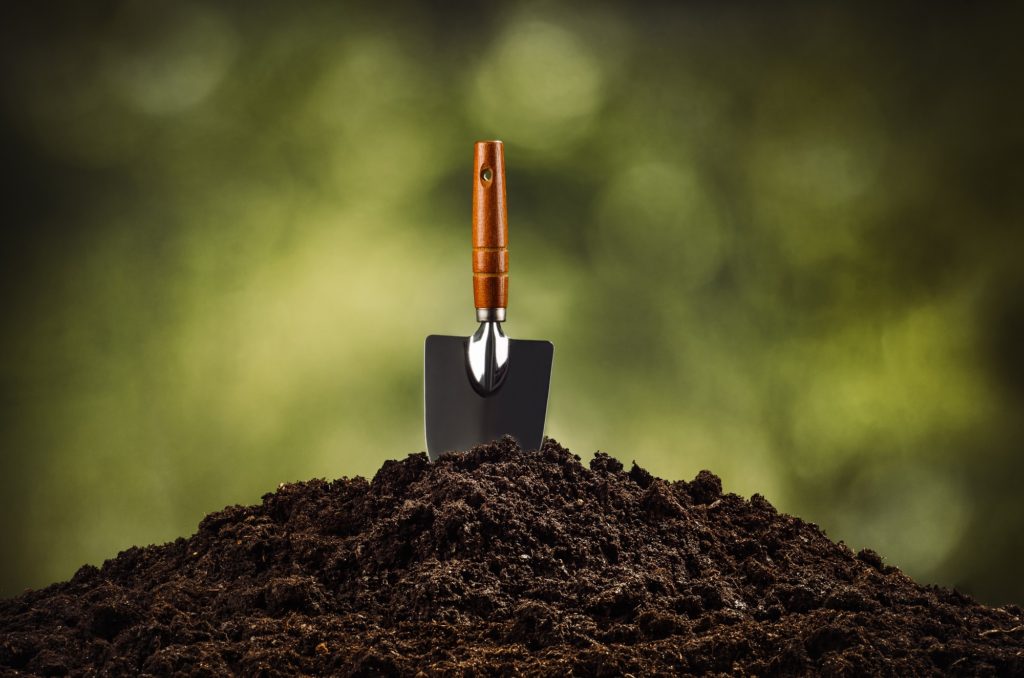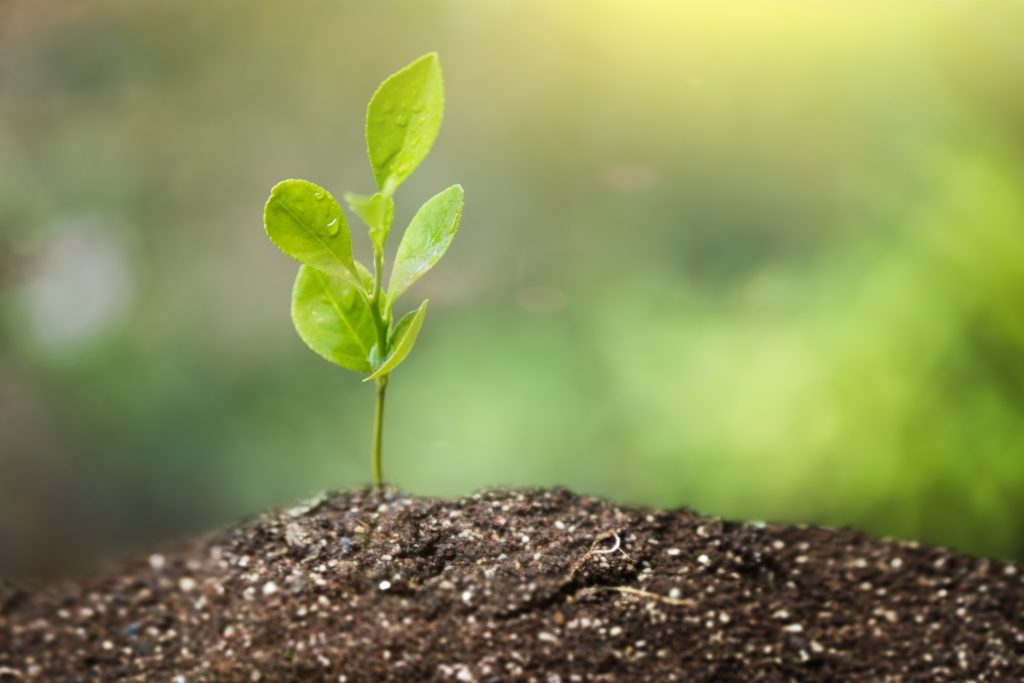Properly planting a citrus tree provides the foundation for successful growth and fruit production. Once your lemon tree, Persian lime, or clementine orange is established it will give you years of enjoyment, but it needs a solid start. Care and attention when planting is the best investment you can make in your tree’s future.
Planting Citrus Trees in Ground
Follow these simple steps to ensure the successful planting and health of your new citrus tree or trees. Whether you are planting an orange, tangerine, lemon, kumquat, grapefruit, or lime the basic process is the same. If you live within the recommended USDA Climate Zone for your particular tree, you can plant it in the ground and enjoy vigorous growth and delicious citrus.
The Basic Process:
1. Carefully Unpack Your New Tree
When you get your new tree carefully unpack it by slowly cutting away the box and removing all packing materials. Remove the tree, and unwrap any material wrapping the tree itself. Trees may lose leaves in transit, or have very few leaves at certain times of the year. This is normal, and your tree will regrow lost leaves. Allow your new tree to remain in the pot it came in for now. Carry it by holding the pot (not the tree trunk or branches).
2. Water Your New Tree
Once your tree is unpacked the first thing it wants is a drink of water. Water your tree in a location where it can drain freely, such as outside on a lawn, deck, or outdoor patio. If you are in a colder climate, do not take the tree outdoors if the temperature is below 40 degrees F. In colder areas, you can place your tree in a utility sink, shower, or bathtub so you can water it fully and allow for drainage. The first time you water the tree, fill the pot with water until it drains from the drainage holes in the bottom. Do this three or four times to allow the entire tree to absorb water.
3. Select A Planting Spot
After you have unpacked and watered your new citrus tree, put it in a temporary location so it can slowly become acclimated to the sunlight. A shaded spot outside or on a covered porch is ideal. Immediately placing a new young tree in direct sunlight could lead to leaf drop and general shock for the tree. It has traveled far and been in a box for a time so it is best to gently let it get used to the elements again. During this time you can scout your yard for the perfect location to plant the tree. Be mindful of the eventual size of your tree, and give it enough room to grow. Remember that you will also want to access the tree from various sides to pick fruit. Be sure to choose a location that gets as much sunlight as possible, and is far enough from buildings, pathways, and other plants. Do not plant in an area prone to standing water, such as a ditch bank.
4. Dig The Hole
Once you have picked the spot, and let your new citrus tree acclimate to the light by resting it in the shade for a few days, you are ready to plant. Citrus trees prefer sandy loam soil that drains well and contains rich organic matter. Preparing the soil is easy. Dig a hole that is about one foot larger than the root ball all the way around. Also make the hole about a foot deeper than the tree’s root ball, but don’t bury the tree that far down just yet. Back-fill the deeper hole to a level that will allow the root ball surface to be level with the existing ground. Remove the pot from the root ball, and place the tree in the hole.
5. Prepare The Soil And Plant
As you back-fill the hole, and fill in around the planted tree, mix the soil with your organic material. Examples of this are composted cow manure, composted chicken manure, or bagged organic compost. Most of these are available at home or garden supply stores. You can also add raked leaves or grass clippings. Add roughly five gallons of your organic material to the soil, and plant your tree. Some very rich soils may require the addition of sand to facilitate drainage. As you back-fill the hole with the tree placed in it, stop halfway, water the tree in well, and allow it to drain. Then continue to fill the hole to the surface of the root ball with soil. Create a ridge of dirt to surround the tree in order to contain the water as you apply it now and in the future. This ring should be six inches high and about three feet from the tree base all the way around. It will naturally erode over a period of time and there is no need to rebuild it once it has done so. Once the tree is planted, water it once more.
6. Mulch Under Your Citrus Tree
Citrus trees can benefit from a light mulch to retain soil moisture and discourage the growth of weeds or grass. Do not let grass grow right up to the tree base. Use shredded wood mulch such as cypress or a wood blend. Layer the mulch to a depth of about three inches to cover the ground around the newly planted tree. However, be sure to keep a six-inch perimeter of clear soil surrounding the tree trunk’s base. This area at the base of the tree should always remain free of any mulch or debris. Mulch stacked against a citrus tree base is an invitation to pests and harmful fungi.
Planting Citrus Trees In Pots / Containers
Step One: Choosing Your Citrus Tree
A citrus tree can provide amazing and nutritious fruit that you can simply pick, peel, and eat. This enticing idea often leads people to wonder if citrus can be grown in a pot or container. The answer is yes. However, some larger or standard sized citrus varieties can be challenging to grow for long periods in containers due to their eventual size and vigorous root growth. Dwarf varieties typically grow to a mature height of about twelve feet tall, and are far better suited to the container life. Some dwarf varieties include Dwarf Persian Lime, Dwarf Improved Meyer Lemon, and Dwarf Moro Blood Orange. Calamondin Oranges and Kumquats are also great specimens of citrus to grow in a pot at home. Dwarf citrus can be pruned to even smaller stature if necessary. Choose the best tree for you, and then follow these remaining steps to successfully grow your own containerized citrus trees.
Step Two: Choosing The Pot For Your Citrus Tree
New, young citrus trees come in small, but often deep, nursery pots. When you are selecting a pot to move your new tree into, choose one that is slightly larger than the pot the tree came in. All new pots that you use to grow citrus must have adequate holes in the bottom for drainage. A basic starting point for most new container grown citrus is a three-gallon sized pot. Three-gallon pots are usually about nine inches in diameter, and ten inches tall. A new tree can typically live in this size pot for up to two years. At two years, and when roots appear at the drainage holes, move the tree up to a six or seven gallon pot. As long as the next container is at least two inches bigger by depth and circumference, it will be fine. Re-pot your tree in this manner every two years until you reach a container size of about twenty gallons. Plastic nursery pots are durable and light, while clay or fiberglass pots can be more attractive, but heavier to move.
Step Three: Potting Your Citrus Tree
When you are ready to pot your tree, place enough well draining soil in the bottom of the pot to position the surface of the new tree’s root ball about two inches below the pot rim. Remove the original pot and inspect the root ball. Cut away any obviously dead roots or roots that have grown into extreme coils within the pot. If the roots are densely packed, loosen them by gently prying them apart. There is no need to fully untangle the roots. Simply loosen them a bit if needed. Begin to fill the pot with soil and fully cover the root system. Stop at the halfway point, water the soil in, and then continue to fill the container the rest of the way. Fill the soil up to a point where the surface of the tree’s previously potted root ball is at the level of the new soil. Leave about two inches of space between the top of the soil and the pot rim. This will allow you to water the tree properly. Do not bury the root ball deeply, or stack soil over the trunk base. Water the newly potted citrus tree well and let it drain.
Step Four: Watering Your Potted Citrus Tree
If you live in an area where temperatures normally fall below forty degrees Fahrenheit in the winter, you will need to bring your potted citrus trees indoors over the colder months. Gently acclimate the trees to the move by putting them in for a day, then back outside for a day, for one week. After this first week, position the trees in a sunny window. If the humidity is low, mist the tree with a water spray bottle every other day. You can also place a humidifier near the tree. In some conditions, container grown citrus trees that are inside for the winter will require less watering because the soil in the pot can take longer to dry. Use a large potting saucer under the tree, so you can water it and allow it to drain. Don’t let the saucer stay flooded. When it is time to move the trees back outside in the spring, after all chance of frost has passed, re-acclimate the trees to the outdoors in the same way that you did when you brought them in when winter began (outside for a day, then back inside for a day, for one week). Follow these easy steps and you will be able to grow happy, vibrant citrus in pots at home.
Acclimation of Citrus Trees
Citrus trees all thrive in bright sunlight, it is best to gradually acclimate a new tree before planting. The same is true for positioning a newly potted citrus tree. When you receive your citrus tree water it well and place it in a shady or sheltered spot for three days. A fully shaded spot under a tree in your yard or on a covered porch are both good choices. After three days in the shade, move your citrus tree to a location where it will receive an hour or two of morning sun. You may need to re-position the tree in the shade if the midday sun is harsh in this location. Allow your new citrus tree to enjoy the morning sun in this manner for one week. At this point your citrus tree will be ready to handle direct sunlight with ease. Move your citrus tree to the location in which you plan to plant it. Help the tree to become familiar with this location by leaving it there in the pot for an additional week. Throughout this process be sure to keep the tree watered and securely upright. Your citrus tree is now ready to plant. If you are growing your citrus tree in a container, you are ready to proceed to care and maintenance.
Selecting the Best Location
Choosing a Citrus Tree Location
One of the most important factors for healthy citrus is the growing location. Soil, sunlight, surroundings, and space combine to affect the health and growth of your citrus tree. Cross-pollination is also a concern for some varieties, and therefore, plays a role in the location of those particular citrus trees.
Soil Matters
Citrus trees do best in a location with fertile, well-drained soil. If your soil has a high percentage of clay, add sand to increase drainage. If your soil is very sandy, add peat to retain nutrients and moisture. Citrus trees do not like wet feet so avoid locations that remain damp or soggy, such as low spots or continually flooded ditch banks. Proper drainage is essential for healthy citrus trees. It is also important that the soil surface is free of weeds or grass. A very light mulch to control weeds may be used, but avoid thick, heavy mulches or saturated compost under your citrus tree (especially upon or around the tree’s trunk).
Sunlight
Citrus trees love locations in full, all-day Sun. But six to eight hours of direct sunlight will make your citrus trees happy and healthy. Consider the amount of light the final planting location will receive, and remember that light angles and shadows change with the seasons. Choose a spot with the most Sun and your citrus trees will thank you with delicious fruit.
Surroundings And Space
Always be aware of the surroundings when picking out a location to plant a citrus tree. Things to consider are overhead utility lines, fixed structures such as buildings or decks, and areas of travel like paths and walkways. It’s easy to forget the space needed for full-grown citrus when you are planting a young tree. Be mindful of the size your mature citrus tree will attain. Plan ahead so that the tree’s location offers plenty of room for growth.
An Eye On The Future
Once you find your citrus tree location has worked well and your tree has provided you with, for example, delicious blood oranges, you may want to add a key lime tree or a tangerine. Plan for 18 to 25 feet between standard size citrus trees, and 10 to 12 feet between dwarf varieties. Remember, the time to plan for additional trees is when you are selecting the location for the first.
Soil Preparation
Soil Preparation To Grow Citrus Trees
Learning how to grow an orange begins before you ever bring home a bag of citrus tree fertilizer. Soil preparation is the process of adding nutrients and loosening compacted soil after you dig but before you place your citrus tree. There are several key points to know to ensure that your soil is ready to help your Kaffir lime or lemon tree perform.
How To Prepare Soil For Citrus Planting
You recall from the previous section that the hole you dig should be large enough to accommodate the root ball with space to grow. But if the soil surrounding the tree is tightly compacted, you will need to loosen that soil as well. Break the surface and top layers of soil up with a shovel and turn any compacted areas to loosen them down to a depth of at least a foot or two.
Soil Types
Clay soils are made of very small particles that feel slick and sticky when wet. Clay soils hold moisture well, but resist watering when they become dry. Once saturated, clay soils are slow to drain. For citrus, clay soils should be loosened and amended with coarse material such as sand or rough compost to facilitate better drainage. Loam soil is a blend of sand, silt, and organic matter. Sandy loam soil that drains well is ideal for growing citrus trees. The goal is to achieve a balance and move your native soil in the direction of a sand to silt loam that is rich in organic matter, retains moisture to a degree, but also drains well enough to never remain soggy. On the other end of the spectrum from clay soils are the sandy soil types. Sandy soil is coarse, tends to be loose, and will not form a ball when squeezed. These soils drain exceedingly well, but will require the addition of ample organic material such as peat, manure, or leaves to achieve a soil rich enough to capture nutrients and retain effective moisture levels.
How To Add Initial Soil Nutrients For Citrus
Once your hole is dug and the surrounding ground loosened, you can add organic material to your pile of topsoil. Mix in composted cow manure, garden compost, or peat moss to increase the soil volume by one third. Baled sphagnum peat moss and granular peat are both suitable. Shredded leaves or grass clippings from your yard are also viable soil amendments. Both will add organic nutrients and loosen the soil. Avoid adding stronger fertilizers at planting time.
More Planting Advice
Planting Citrus Trees
Properly planting a citrus tree provides the foundation for successful growth and fruit production. Once your lemon tree, Persian lime, or clementine orange is established it will give you years of enjoyment, but it needs a solid start. Care and attention when planting is the best investment you can make in your tree’s future.
Before You Dig
Citrus fruit trees produce more and better fruit when the soil is to their liking. Soil pH between 5.5 and 6.5 is the ideal condition for citrus. Contact your local County Extension Office for information about soil testing in your area, or use a digital soil meter to test the soil in your location. Soils can be amended to attain proper pH levels.
Planting In The Ground
Prepare a hole large enough to allow the root system to fit with enough added space to back-fill the hole at least ten inches all the way around the root ball. Gently loosen any tightly wound roots but do not aggressively disturb the root system. Do not over bury. Place the citrus tree at a depth where the surface of the root ball is level with what will be the surface of the ground. Pack soil lightly to eliminate any air pockets, and add no fertilizer to the back-fill soil. Water thoroughly and be sure the trunk and tree base are free of any caked soil or mud.
Planting In A Container
Planting a new citrus tree in a container is similar to planting in the ground. Use a pot large enough to accommodate root growth. A container should have at least three inches of growing space for the root system. Plant the citrus tree so that the soil surface is three inches below the container rim. Once again, do not over bury, and be sure the root surface is at the soil surface level once you are done. Gently compact the soil as you fill the container and water thoroughly once your new citrus tree is planted securely in its new home. Citrus trees have a relatively shallow root system, so a wide container is more suitable than a narrow deep one. By your tree’s second summer you can upgrade it to a larger pot with a diameter of up to 20 inches. Refreshing the soil every two years will allow your citrus tree to remain in this larger container permanently.
Protect Your Planted Citrus Trees
Citrus trees do best in temperatures between 55 and 90 degrees Fahrenheit. Ideal temperatures for the spring and summer range from 75 to 90 degrees. During fall and winter, the best temperature range for growing citrus is 60 to 70 degrees. Containerized citrus trees can be moved indoors during harsh cold weather. Planting in a spot protected from wind is the best defense for trees in the ground. Heaters can reduce humidity to dangerous levels when used in close proximity to any citrus tree, so they are best avoided.

